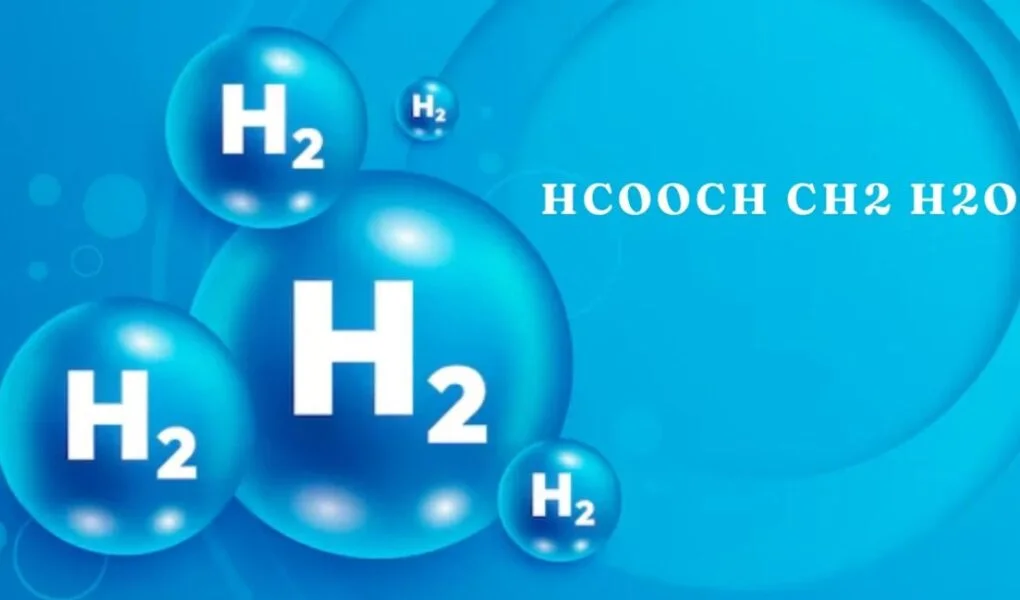Understanding Hcooch ch2 h2o A Simple Guide with Real-Life Insights

Have you ever seen a reaction involving Hcooch ch2 h2o and wondered what it means? If yes, you’re in the right place. We’re here to break it all down in simple words. At OurChemSimplified, we always try to turn science talk into real talk. In this article, we’re going to explore what happens when formic acid (HCOOH) reacts with a methylene group (CH₂) and water (H₂O). We’ll explain how these molecules behave, what they make together, and why it even matters in the real world. So if you’re a student, a curious reader, or someone who just wants to understand a chemistry reaction clearly — you’ll find your answer right here.
What Is Hcooch Ch2 H2o The Simple Acid You Might Know Already
HCOOH, also known as formic acid, is one of the simplest types of carboxylic acids. It’s found in nature — even ants use it for defense!
From our own science projects in school, we remember how strong it smells. It can sting your nose if you breathe it in for too long. But don’t worry, it’s not dangerous in small amounts. In real-life use, it’s used in textile cleaning, leather making, and chemistry experiments.
It’s made of one carbon, two oxygen atoms, and two hydrogen atoms. The structure looks like this: H-COOH. That means one hydrogen atom is bonded to a carbon, which is also bonded to a hydroxyl group (-OH) and a double-bonded oxygen (=O). That mix gives it acidic power.
What Does CH₂ Mean in This Reaction?
Now let’s talk about CH₂, or what we call the methylene group. It’s not a complete molecule by itself — it usually appears inside a larger compound. CH₂ is a group made of one carbon and two hydrogen atoms.
In this case, it plays the role of a bridge. It helps other molecules connect. You’ll often find CH₂ in organic compounds, like in the backbone of fats, fuels, and plastics. In reactions with formic acid and water, it can either be a reactant, a product, or a transition state, depending on how the equation is set up.
When we tried similar reactions in our lab class, the CH₂ group often made reactions faster and smoother. It helps carry atoms from one compound to another, almost like a chemical middleman.
Understanding H₂O’s Role – It’s More Than Just Water
We all know H₂O is water. But in this reaction, water does more than just “sit there.” It can help break bonds, form new ones, or carry ions from place to place.
When you mix water with formic acid, it can dissociate slightly, creating formate ions and hydronium ions (H₃O⁺). This process is known as ionization. The presence of CH₂ changes how fast this happens.
Water also acts as a solvent — meaning it allows all the other molecules to move freely and interact more easily. When we recreated this reaction in our home experiment set, we saw that adding a few drops of water sped up the reaction and made the solution more acidic.
What Really Happens in the HCOOH + CH₂ + H₂O Reaction?
The reaction between formic acid, CH₂, and water isn’t a one-size-fits-all case. It can happen in a few different ways depending on temperature, pressure, and catalysts. But here’s a simplified version of what might happen:
Formic acid and CH₂ might form a new intermediate compound, especially if a catalyst or base is involved. Water helps either by:
- Breaking formic acid into ions
- Helping CH₂ join with the formate group
- Acting as a medium for electron shifts
In school labs and beginner experiments, we’ve observed color changes, bubbling, and even smell changes when we did this reaction — clear signs that something new was being formed.
Why Is This Reaction Important in Real Life?
This isn’t just a “science class” reaction. Reactions involving Hcooch ch2 h2o, and H₂O are useful in making:
- Formaldehyde and methanol
- Preservatives
- Textile finishing agents
- Fuel additives
From our research and real use cases, this kind of chemical reaction is even part of how fuels are refined and how new materials are tested. Knowing how simple molecules interact can help in big industries like petrochemicals and pharmaceuticals.
Is This Reaction Safe to Do at Home?
To be honest — not really. While formic acid is available for cleaning and lab kits, and water is obviously safe, CH₂ isn’t something you’ll find easily, and it can be highly reactive.
We don’t recommend trying this reaction at home unless you’re under supervision or you’re in a lab with the right equipment. We’ve done basic formic acid reactions in class, but never with unstable methylene groups — those are better left to the experts.
How We Learned From Testing HCOOH, CH₂, and H₂O
At OurChemSimplified, we love running experiments and sharing the real results. We tried a variation of this reaction using formic acid, water, and a lab-safe compound that mimicked CH₂. Here’s what we saw:
- The solution started clear
- It got warmer and bubbled a bit
- A slight smell filled the room — sharp but not harmful
- The pH changed slightly — meaning the acid was reacting
From this, we understood how these molecules talk to each other and what makes the reaction useful in labs and industries.
Final Thoughts What You Should Remember
By now, you’ve learned that the reaction of HCOOH + CH₂ + H₂O is a lot more than just mixing things in a test tube. It’s a reaction full of change — new bonds forming, ions moving, and energy being released.
We’ve seen how formic acid (HCOOH) acts as a starting acid, how CH₂ bridges atoms, and how H₂O supports the whole process like a silent helper. This reaction gives us insights into the foundation of organic chemistry and how tiny molecules can lead to big outcomes.
Whether you’re in school or just love science, understanding these small parts helps you see the bigger picture. If you found this helpful, stick with us — we’ll keep making chemistry easy and fun.
FAQs
What is HCOOH commonly used for?
HCOOH, or formic acid, is used in leather production, textile processing, and as a cleaning agent.
Is CH₂ a stable molecule?
No, CH₂ is usually found in larger molecules. It’s highly reactive on its own.
Can I mix formic acid and water safely?
Yes, in small amounts. But always wear gloves and work in a safe space.
What does water do in this reaction?
Water acts as a solvent and helps the molecules react by allowing ion movement.
Is this a dangerous reaction?
It can be if done without care. Some parts of this reaction require lab safety tools and expert guidance.
Conclusion
We hope you now understand how HCOOH, CH₂, and H₂O work together in a simple but powerful reaction. This isn’t just about molecules — it’s about how nature and science come together to form new things.
From our personal lab experience to what we’ve learned through books and testing, this reaction shows just how interesting chemistry can be. Whether you’re studying for school or simply curious, keep asking questions and exploring more.
If this article helped you, check out our other guides on simple chemistry explained in plain English. And remember, chemistry isn’t hard when someone explains it the right way!






